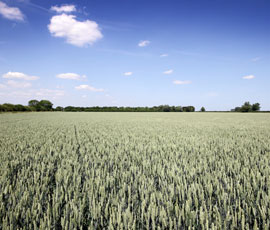CAP reform rotation plans spark management fears

Growers and agronomists are warning that a requirement to grow three crops in the rotation under CAP reform plans will lead to serious management headaches.
Under the proposals, growers would be required to cultivate at least three different crops, with none exceeding 70% of the total farm area and the third not less than 5%.
But under the new plans, smallholders could be hit particularly hard as the threshold is low. Unless the total area of an arable farm business is below 3ha (7.5 acres) it must also include three different crops.
Jim Orson, special adviser for crops and agronomy at NIAB TAG, believes the proposals reflect the European Commission’s concern about intensively-farmed monocultures of wheat and oilseed rape crops, which are expanding fast across Europe.
“There’s a view pervading in Europe that a more flexible rotation would reduce the pesticide bill, but these calculations have ignored the economic system of the farm,” he says.
“I don’t want any legislation that would reduce what’s best on a farmer’s land. This could restrict some growers, especially those on heavy land with wheat/wheat/rape or continuous wheat rotations.
“There seems to be a reluctance to accept that farmers farm to make money.”
However, he concedes that a bigger diversity of crops could increase biodiversity.
Essex grower John Sawdon has been growing continuous wheat since 1980 after taking over the running of Peldon Hall Farm in Colchester from his father.
Mr Sawdon says the family has been growing continuous wheat since the late 1940s and introducing a three-crop rotation rule would “destroy” his business.
“It would disrupt a very sophisticated system that we have here,” he adds. “We are providing for a particular market and if we don’t, it begs the question: ‘Who else do our suppliers go to?'”
Essex-based Prime Agriculture agronomist Graham Brooks says about half his clients would be forced to change their rotation to keep their single farm payment.
“The typical rotation is wheat/wheat/rape and they would be the ones who would have to make changes,” he says.
“But if it only required swapping a second wheat for a barley it would not be a big problem.”
Strutt and Parker agronomist Will Gemmill says bringing more barley into the rotation would “help spread the workload and bring harvest forward”.
However, for those growing continuous wheat, the downside is that it would “mess up their take-all calculations”.
Mr Gemmill reckons bigger arable operations would be able to cope better with the changes, but farms less than 40ha would suffer most.
He believes the UK farming industry should lobby Brussels to raise the minimum 3ha threshold, which he considers too low.
“A minimum total area of 3ha has the potential to discriminate against smallholdings. Many smaller farmers tend to contract farm their land out to a neighbour, who might be cultivating a single crop for ease.
“In these situations, it would become more onerous to have to grow three crops, especially for some smallholdings.”
Buckinghamshire grower Charlie Edgley grows 810ha of cereal crops near High Wycombe.
Mr Edgley grows mainly continuous wheat, but is changing his rotation cropping this season to include winter oilseed rape, winter oats and spring beans, after suffering two years of saddle gall midge blossom.
“If the proposals became law we would still try to take the wheat to the maximum 70%,” he says.
But it could have a more serious impact on block-cropping, he adds.
“A lot of the area I farm is contract-farmed and splitting all those fields into three crops would be a nightmare.”
Have your say on CAP reform using our online website forum.

